
Crip Authorship Disability as Method | |
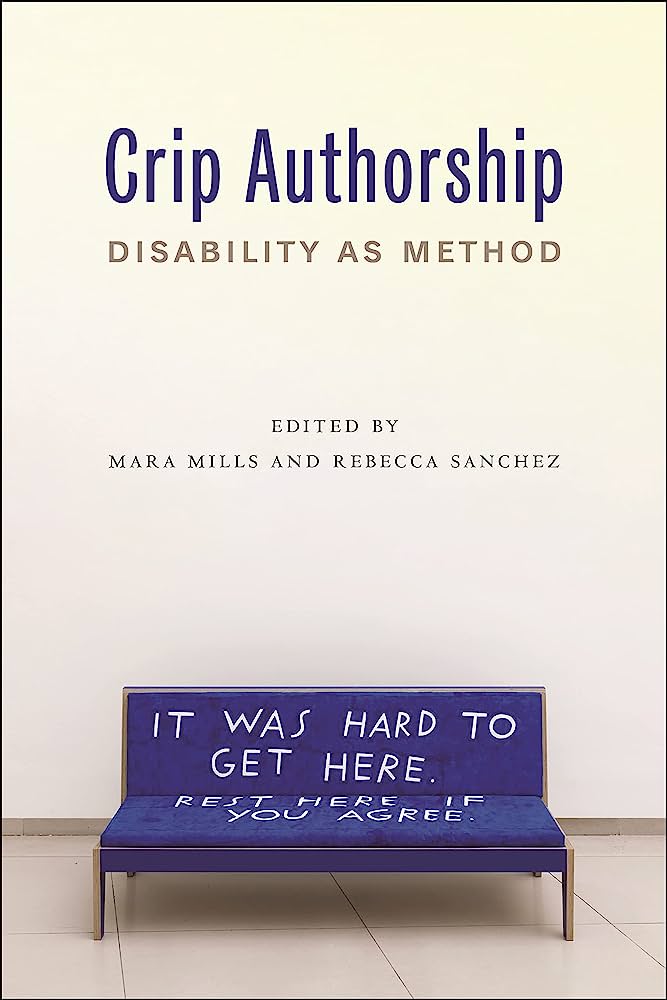 | Mara Mills and Rebecca Sanchez have convened leading scholars, artists, and activists to explore how disability shapes authorship, transforming cultural production, aesthetics, and media. Starting from the premise that disability is plural and authorship is an ongoing project, this collection of thirty-five essays asks how knowledge about disability is produced and shared in disability studies |
The Apple II Age How the Computer Became Personal | |
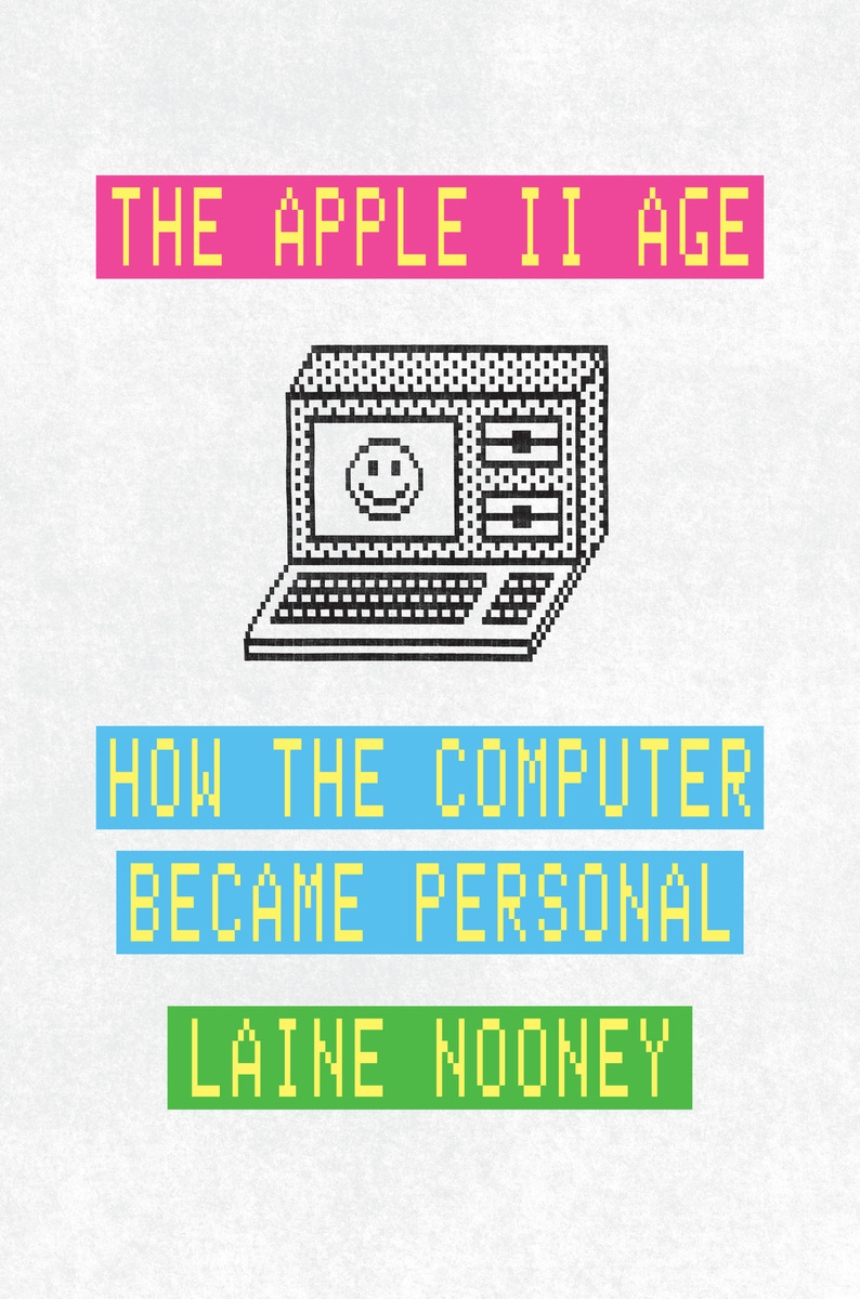 | An engrossing origin story for the personal computer—showing how the Apple II’s software helped a machine transcend from hobbyists’ plaything to essential home appliance. |
Legal Spectatorship: Slavery and the Visual Culture of Domestic Violence | |
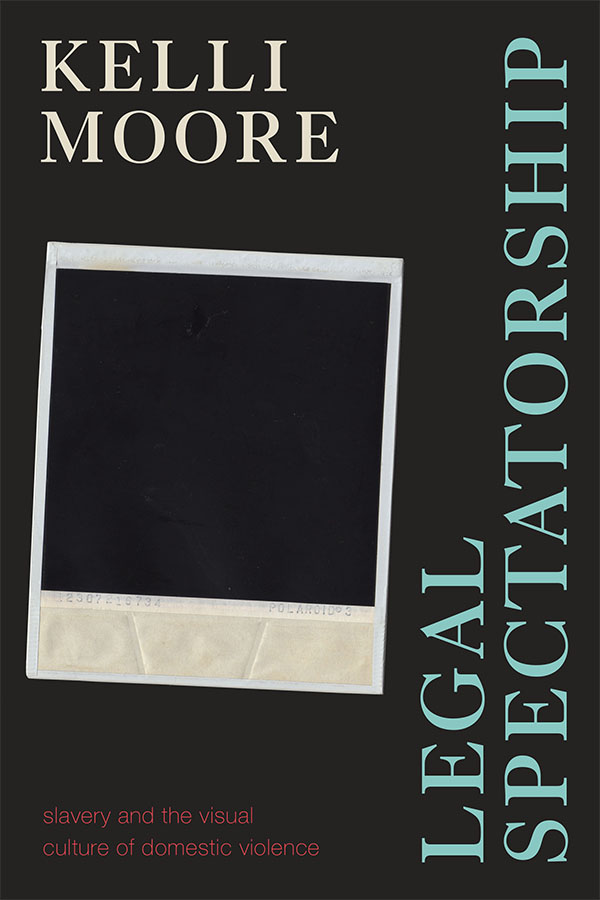 | In Legal Spectatorship Kelli Moore traces the political origins of the concept of domestic violence through visual culture in the United States. |
Terrorism in American Memory | |
 | Terrorism in American Memory sheds light on the struggles over who is memorialized, who is forgotten, and what that politics of memory reveals about the United States as an imaginary and a nation. |
Media Hot and Cold | |
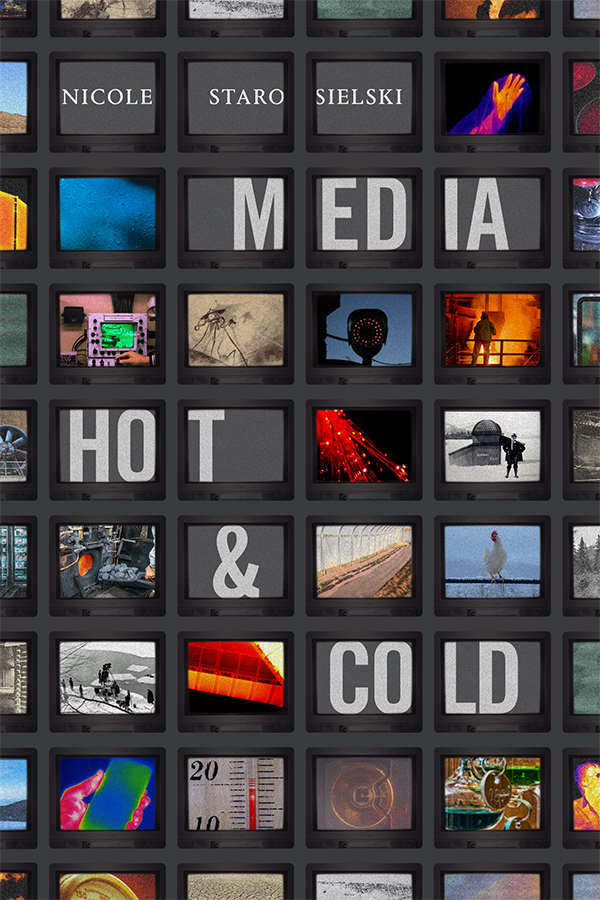 | In Media Hot and Cold Nicole Starosielski examines the cultural dimensions of temperature to theorize the ways heat and cold can be used as a means of communication, subjugation, and control. |
Uncomputable: Play and Politics in the Long Digital Age | |
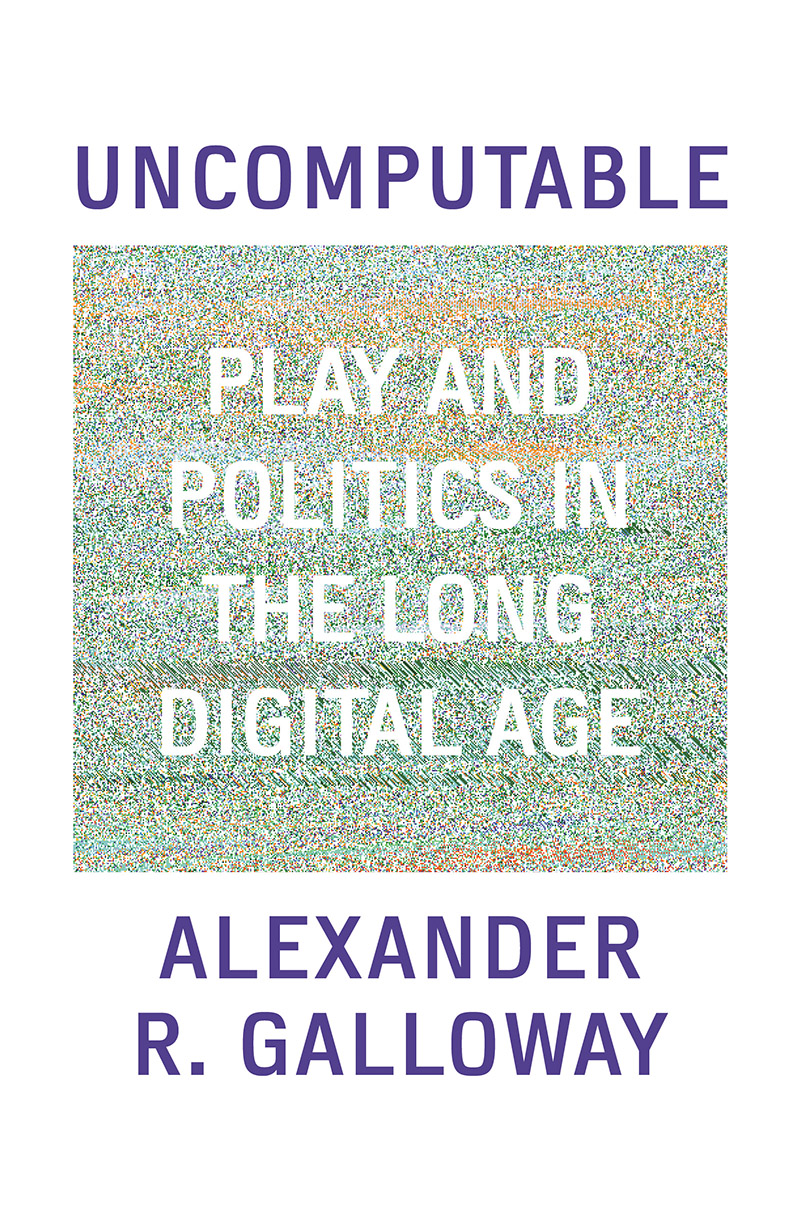 | Narrating some lesser known episodes from the deep history of digital machines, Alexander Galloway explains the technology that drives the world today, and the fascinating people who brought these machines to life. |
Dirty Works: Obscenity on Trial in America’s First Sexual Revolution | |
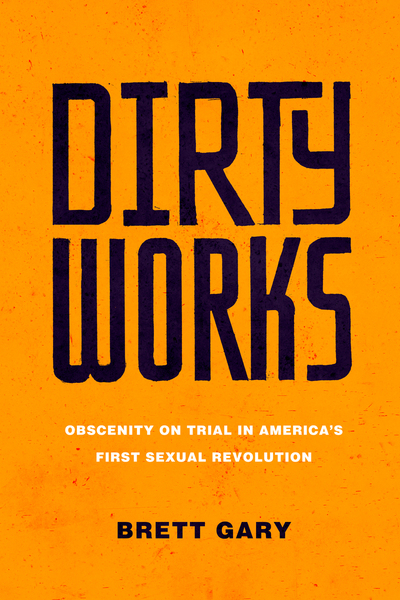 | “This impressive book sheds light on the entangled, age-old relationship of laws, progress, and morality. Gary has written a compelling tour de force.” — Nadine Strossen, Former President of The American Civil Liberties Union |
Marking Time: Art in the Age of Mass Incarceration | |
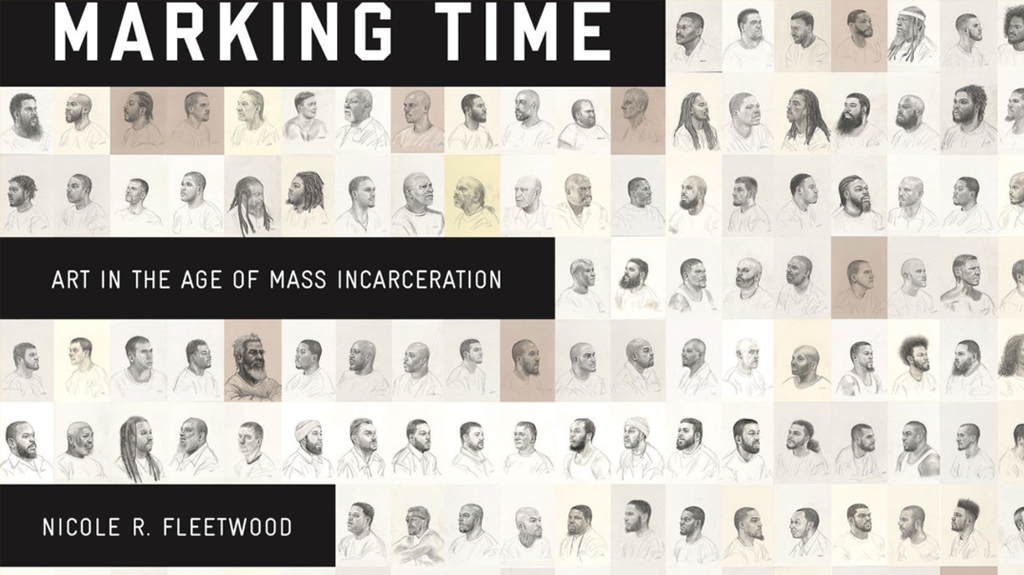
| Based on interviews with currently and formerly incarcerated artists, prison visits, and the author’s own family experiences with the penal system, Marking Time shows how the imprisoned turn ordinary objects into elaborate works of art. |
Ethnography #9 Review Essays | |
 | Alan Klima’s Ethnography #9—winner of the 2020 Bateson Prize—is a set of meditations on ghosts, numbers, and capitalist crisis in Thailand. The review essays in this series are also unconventional, reflective, speculative, and experimental. They do not necessarily follow the logic and structure of the book. Nor do they summarize Ethnography #9. Indeed, Klima’s ethnographic meditations refuse a singular or a linear narrative—a reader has to begin to learn to read differently as he encounters the materials in the text. |
Testing Hearing: the Making of Modern Aurality | |
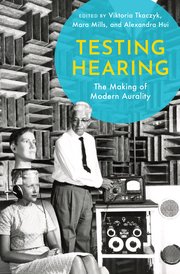 | Testing Hearing considers both the testing of hearing and testing with hearing to explore the co-creation of modern epistemic and auditory cultures. The book's twelve contributors trace the design of ever more specific tests for the arts, education and communication, colonial and military applications, sociopolitical and industrial endeavors. |
Black Software: The Internet & Racial Justice, from the AfroNet to Black Lives Matter | |
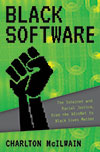 | From the 1960s to present, the book examines how computing technology has been used to neutralize the threat that black people pose to the existing racial order, but also how black people seized these new computing tools to build community, wealth, and wage a war for racial justice. |
War and Algorithm | |
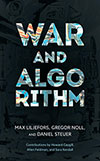 | War and Algorithm looks at the increasing power of algorithms in these emerging forms of warfare from the perspectives of critical theory, philosophy, legal studies, and visual studies. The contributions in this volume grapple with the challenges posed by algorithmic warfare and trace the roots of new forms of war in the technological practices and forms of representation of the digital age. |
Violence: Humans in Dark Times | |
 | In a series of penetrating conversations, Brad Evans and Natasha Lennard talk with a wide range of cutting-edge thinkers to explore the role of violence in politics, culture, the media, public speech, and against the environment. First published in the New York Times and the Los Angeles Review of Books, these lively, in-depth exchanges among historians, theorists, and artists offer a timely and bracing look at how the increasing expression and acceptance of violence—in all strata of society—has become a defining feature of our times. |
Appified: Culture in the Age of Apps | |
 | Appified is the first scholarly volume to examine individual apps within the wider historical and cultural context of media and cultural studies scholarship, attuned to issues of politics and power, identity and the everyday. |
Bright Signals: A History of Color Television | |
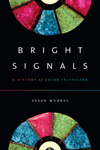 | Winner of the Michael Nelson prize from the International Association for Media and History; winner of Society for Cinema and Media Studies 2019 Kovács Book Award. In Bright Signals Susan Murray traces wide-ranging debates within and beyond the television industry, positioning the story of color television, which was replete with false starts, failure, and ingenuity, as central to the broader history of twentieth-century visual culture. In so doing, she shows how color television disrupted and reframed the very idea of television while it simultaneously revealed the tensions about technology's relationship to consumerism, human sight, and the natural world. |
Trump and the Media | |
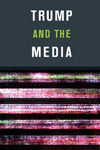 | Donald Trump's election as the 45th President of the United States came as something of a surprise—to many analysts, journalists, and voters. What happened? And what role did the news and social media play in the election? In Trump and the Media, journalism and technology experts grapple with these questions in a series of short, thought-provoking essays. Considering the disruption of the media landscape, the disconnect between many voters and the established news outlets, the emergence of fake news and “alternative facts,” and Trump's own use of social media, these essays provide a window onto broader transformations in the relationship between information and politics in the twenty-first century. |
The Appearance of Black Lives Matter | |
 | An intertextual conversation between artist Carl Pope and writer Nicholas Mirzoeff on the issues surrounding Ferguson, Baltimore and the activism of Black Lives Matter. |
L'immigration au prisme des médias | |
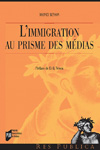 | Ce livre offre un portrait détaillé des journalistes français et américains en action, alors qu’ils débattent de la façon dont traiter et commenter l’un des sujets les plus importants de notre époque. En s’appuyant sur des interviews avec des journalistes de premier plan et sur les analyses d’un vaste échantillon d’informations tirées de la presse papier et de la télévision depuis les années 1970, Rodney Benson montre comment le débat sur l’immigration s’est progressivement focalisé sur les cadres spectaculaires et chargés d’émotion de l’humanitarisme et de l’ordre public. |
Public Servants: Art and the Crisis of the Common Good | |
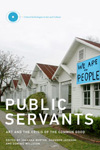 | Concepts such as “new genre public art,” “social practice,” or “socially engaged art” may imply a synergy between the role of art and the role of government in providing social services. Yet the arts and social services differ crucially in terms of their methods and metrics. Socially engaged artists need not be aligned (and may often be opposed) to the public sector and to institutionalized systems. In many countries, structures of democratic governance and public responsibility are shifting, eroding, and being remade in profound ways—driven by radical economic, political, and global forces. According to what terms and through what means can art engage with these changes? |
Creativity Class: Art School and Culture Work in Postsocialist China | |
 | The last three decades have seen a massive expansion of China's visual culture industries, from architecture and graphic design to fine art and fashion. New ideologies of creativity and creative practices have reshaped the training of a new generation of art school graduates. Creativity Class is the first book to explore how Chinese art students develop, embody, and promote their own personalities and styles as they move from art school entrance test preparation, to art school, to work in the country's burgeoning culture industries. Chumley shows the connections between this creative explosion and the Chinese government's explicit goal of cultivating creative human capital in a new "market socialist" economy where value is produced through innovation. |
Sustainable Media | |
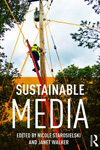 | Sustainable Media explores the many ways that media and environment are intertwined from the exploitation of natural and human resources during media production to the installation and disposal of media in the landscape; from people’s engagement with environmental issues in film, television, and digital media to the mediating properties of ecologies themselves. The assembled chapters expose how the social and representational practices of media culture are necessarily caught up with technologies, infrastructures, and environments. |
Mediating Migration | |
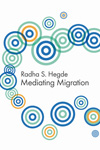 | Mediating Migration narrates aspects of the migrant experience as shaped by the technologies of communication and the social, political and cultural configurations of neoliberal globalization. The book examines the mediated reinventions of transnational diasporic cultures, the emergence of new publics, and the manner in which nations and migrants connect. By placing migration and media practices in the same frame, the book offers a wide-ranging discussion of the contested politics of mobility and transnational cultures of diasporic communities as they are imagined, connected, and reproduced by various groups, individuals, and institutions. |
Archives of the Insensible | |
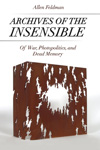 | "Scouring the political unconscious with exquisite precision and sovereign decisiveness...Archives of the Insensible will become the go-to work to help us confront unmanageably traumatizing realities by which we are seized and the cutthroat politics of our era." —Avital Ronell In this jarring look at contemporary warfare and political visuality, renowned anthropologist of violence Allen Feldman provocatively argues that contemporary sovereign power mobilizes asymmetric, clandestine, and ultimately unending war as a will to truth. |
Gaza as Metaphor | |
 | ‘A searing rendition of grim tragedy, and a powerful call to action.’ Gaza as Metaphor brings together journalists, writers, doctors, academics and others, who use metaphor to record and historicise Gaza, to contextualise its everyday realities, interrogate its representations and provide an understanding of its real and symbolic significance. |
Banking on Words: The Failure of Language in the Age of Derivative Finance | |
 | In this provocative look at one of the most important events of our time, Arjun Appadurai argues that the economic collapse of 2008—while indeed spurred on by greed, ignorance, weak regulation, and irresponsible risk-taking—was, ultimately, a failure of language. To prove this sophisticated point, he takes us into the world of derivative finance, which has become the core of contemporary trading and the primary target of blame for the collapse and all our subsequent woes. With incisive argumentation, he analyzes this challengingly technical world, drawing on thinkers such as J. L. Austin, Marcel Mauss, and Max Weber as theoretical guides to showcase the ways language—and particular failures in it—paved the way for ruin. |
Keywords in Sound | |
 | In twenty essays on subjects such as noise, acoustics, music, and silence, Keywords in Sound presents a definitive resource for sound studies, and a compelling argument for why studying sound matters. Each contributor details their keyword's intellectual history, outlines its role in cultural, social and political discourses, and suggests possibilities for further research. Keywords in Sound charts the philosophical debates and core problems in defining, classifying and conceptualizing sound, and sets new challenges for the development of sound studies. |
Signal Traffic | |
 | In Signal Traffic, editors Lisa Parks and Nicole Starosielski use the term "media infrastructure" to signal a shift in critical focus and approach that questions the international telecommunication network as a given. Contributors instead confront vital questions concerning the multiple and hybrid forms networks take, the different ways they are imagined and engaged with by publics around the world, their local effects, and what human beings experience when a network fails. Exploring such issues leads some of the essayists to examine the physical objects and industrial relations that make up an infrastructure. Others venture into the marginalized communities that live on the edges of media infrastructures--people orphaned from the knowledge economies, technological literacies, and epistemological questions linked to infrastructural formation and use. |
How to See the World | |
 | In recent decades, we have witnessed an explosion in the number of visual images we encounter, as our lives have become increasingly saturated with screens. From Google Images to Instagram, video games to installation art, this transformation is confusing, liberating and worrying all at once, since observing the new visuality of culture is not the same as understanding it. As Mirzoeff reminds us, this is not the first visual revolution; the 19th century saw the invention of film, photography and x-rays, and the development of maps, microscopes and telescopes made the 17th century an era of visual discovery. But the sheer quantity of images produced on the internet today has no parallels. In the first book to define visual culture for the general reader, Mirzoeff draws on art history, theory and everyday experience to provide an engaging and accessible overview of how visual materials shape and define our lives. |
The Undersea Network | |
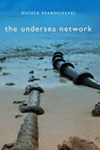 | Winner of the Society for Cinema & Media Studies Best First Book Award In our "wireless" world it is easy to take the importance of the undersea cable systems for granted, but the stakes of their successful operation are huge, as they are responsible for carrying almost all transoceanic Internet traffic. In The Undersea Network Nicole Starosielski follows these cables from the ocean depths to their landing zones on the sandy beaches of the South Pacific, bringing them to the surface of media scholarship and making visible the materiality of the wired network. In doing so, she charts the cable network's cultural, historical, geographic and environmental dimensions. Starosielski argues that the environments the cables occupy are historical and political realms, where the network and the connections it enables are made possible by the deliberate negotiation and manipulation of technology, culture, politics and geography. |
Laruelle: Against the Digital | |
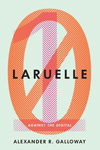 | Laruelle is one of the first books in English to undertake in an extended critical survey the work of the idiosyncratic French thinker François Laruelle, the promulgator of non-standard philosophy. In examining Laruelle and digitality together, Galloway shows how Laruelle remains a profoundly nondigital thinker and engages in an extensive discussion on the interconnections between media, philosophy, and technology. |
Music in Contemporary Philosophy | |
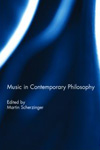 | This book examines the functional place of music in contemporary European philosophy of the 20th and 21st centuries. Edmund Husserl, Martin Heidegger, Jean-François Lyotard, Jacques Rancière and Alain Badiou are central figures in debates concerning phenomenology, postmodernism and political philosophy. Their musical writings, however, have been largely overlooked. Of those discussed here whose musical writings have gained some currency— Ernst Bloch, Theodor W. Adorno, Jean-Luc Nancy, Edward Said, and Slavoj Žižek—music mostly constitutes but a partial aspect of their overall philosophical output. These chapters attempt to supplement the gap, raising more prominently than hitherto the question concerning music in this philosophical milieu. |
Paper Knowledge: Toward a Media History of Documents | |
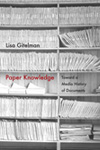 | Paper Knowledge is a remarkable book about the mundane: the library card, the promissory note, the movie ticket, the PDF. It is a media history of the document. Drawing examples from the 1870s, the 1930s, the 1960s, and today, Lisa Gitelman thinks across the media that the document form has come to inhabit over the last 150 years, including letterpress printing, typing and carbon paper, mimeograph, microfilm, offset printing, photocopying, and scanning. Along the way, she discusses documentary matters such as the relation between twentieth-century technological innovation and the management of paper, and the interdependence of computer programming and documentation. |
Excommunication: Three Essays in Media and Mediation | |
 | Excommunication: Three Essays in Media and Mediation examines those moments when media cease to function properly, when messages go beyond the sender and receiver to become excluded from the world of communication itself. The authors of these linked essays—Alexander R. Galloway, Eugene Thacker, and McKenzie Wark—suggest that these moments reveal the ways the impossibility of communication is integral to communication itself, instances the authors call excommunication. In his essay, Galloway proposes an original theory of mediation based on classical literature and philosophy, using Hermes, Iris, and the Furies to map out three of the most prevalent modes of mediation today: mediation as exchange, as illumination, and as network. |
Dictionary of Untranslatables: A Philosophical Lexicon | |
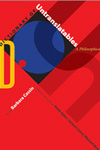 | This is an encyclopedic dictionary of close to 400 important philosophical, literary, and political terms and concepts that defy easy—or any—translation from one language and culture to another. Spanning the classical, medieval, early modern, modern, and contemporary periods, these are terms that influence thinking across the humanities. The entries, written by more than 150 distinguished scholars, describe the origins and meanings of each term, the history and context of its usage, its translations into other languages, and its use in notable texts. Originally published in French, this one-of-a-kind reference work is now available in English for the first time, with new contributions from Judith Butler, Daniel Heller-Roazen, Ben Kafka, Kevin McLaughlin, Kenneth Reinhard, Stella Sandford, Gayatri Chakravorty Spivak, Jane Tylus, Anthony Vidler, Susan Wolfson, Robert J. C. Young, and many more. |
Shaping Immigration News | |
 | Winner of the 2014 Tankard Award and the 2015 International Journal of Press/Politics Best Book Award Drawing on interviews with leading journalists and analyses of an extensive sample of newspaper and television coverage since the early 1970s, Rodney Benson shows how the immigration debate has become increasingly focused on the dramatic, emotion-laden frames of humanitarianism and public order. Yet even in an era of global hypercommercialism, Benson also finds enduring French-American differences related to the distinctive societal positions, professional logics, and internal structures of their journalistic fields. In both countries, less commercialized media tend to offer the most in-depth, multi-perspective, and critical news. Benson challenges classic liberalism's assumptions about state intervention's chilling effects on the press, suggests costs as well as benefits to the current vogue in personalized narrative news, and calls attention to journalistic practices that can help empower civil society. This book offers new theories and methods for sociologists and media scholars and fresh insights for journalists, policy makers, and concerned citizens. |
Addiction By Design | |
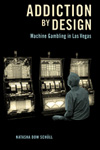 | Winner of the Sharon Stephens First Book Prize; Honorable Mention for the Gregory Bateson Prize; The Atlantic Editors’ "The Best Book I Read This Year" for 2013 Drawing on fifteen years of field research in Las Vegas, anthropologist Natasha Dow Schüll shows how the mechanical rhythm of electronic gambling pulls players into a trancelike state they call the "machine zone," in which daily worries, social demands, and even bodily awareness fade away. Once in the zone, gambling addicts play not to win but simply to keep playing, for as long as possible—even at the cost of physical and economic exhaustion. Schüll describes the strategic calculations behind game algorithms and machine ergonomics, casino architecture and "ambience management," player tracking and cash access systems—all designed to meet the market's desire for maximum "time on device." Her account moves from casino floors into gamblers' everyday lives, from gambling industry conventions and Gamblers Anonymous meetings to regulatory debates over whether addiction to gambling machines stems from the consumer, the product, or the interplay between the two. |
Race, Empire, and the Crisis of the Subprime | |
 | Predatory lending of subprime mortgages targeting the most economically vulnerable minority communities helped trigger the current global financial crisis. This special issue of the journal American Quarterly explores the ways in which "subprime" becomes a racial signifier in the current debate about the causes and fixes for a capitalism itself in crisis. It signifies both the accumulated dispossession of racial exclusion in the twenty-first century gilded age in the United States and Global North more broadly, as well as the imperial ambitions of three decades of U.S.-led neoliberal rule over the Global South. Essays are divided into sections: debt, discipline, and empire; the pathologies of debt; and security, space, and resistance in the post-racial urban setting. Focusing on race and empire, that is, on racial and global subjugation, the contributors expose the ethical-political underpinnings of the current global financial crisis. |
The Future as Cultural Fact: Essays on the Global Condition | |
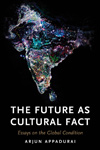 | This major collection of essays, a sequel to Modernity at Large and Fear of Small Numbers, is the product of ten years’ research and writing, constituting an important contribution to globalization studies. Appadurai takes a broad analytical look at the genealogies of the present era of globalization through essays on violence, commodification, nationalism, terror and materiality. Alongside a discussion of these wider debates, Appadurai situates India at the heart of his work, offering writing based on firsthand research among urban slum dwellers in Mumbai, in which he examines their struggle to achieve equity, recognition and self-governance in conditions of extreme inequality. Finally, in his work on design, planning, finance and poverty, Appadurai embraces the “politics of hope” and lays the foundations for a revitalized, and urgent, anthropology of the future. |
Raw Data is an Oxymoron | |
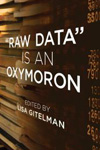 | We live in the era of Big Data, with storage and transmission capacity measured not just in terabytes but in petabytes (where peta- denotes a quadrillion, or a thousand trillion). Data collection is constant and even insidious, with every click and every “like” stored somewhere for something. This book reminds us that data is anything but “raw,” that we shouldn’t think of data as a natural resource but as a cultural one that needs to be generated, protected, and interpreted. Contributors discuss the intellectual history of data as a concept; describe early financial modeling and some unusual sources for astronomical data; discover the prehistory of the database in newspaper clippings and index cards; and consider contemporary “dataveillance” of our online habits as well as the complexity of scientific data curation. |
Media Capital: Architecture and Communications in New York City | |
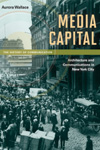 | With a unique focus on corporate headquarters as embodiments of the values of the press and as signposts for understanding media culture, Media Capital demonstrates the mutually supporting relationship between the media and urban space. Aurora Wallace considers how architecture contributed to the power of the press, the nature of the reading public, the commercialization of media, and corporate branding in the media industry. Tracing the rise and concentration of the media industry in New York City from the mid-nineteenth century to the present, Wallace analyzes physical and discursive space, as well as labor, technology, and aesthetics, to understand the entwined development of the mass media and late capitalism. |
The Demon of Writing: Powers and Failures of Paperwork | |
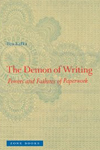 | In The Demon of Writing, Ben Kafka offers a critical history and theory of one of the most ubiquitous, least understood forms of media: paperwork. States rely on records to tax and spend, protect and serve, discipline and punish. But time and again, this paperwork proves to be unreliable. Examining episodes that range from the story of a clerk who lost his job and then his mind in the French Revolution to an account of Roland Barthes’s brief stint as a university administrator, Kafka reveals the powers, the failures, and even the pleasures of paperwork. Many of its complexities, he argues, have been obscured by the comic-paranoid style that characterizes much of our criticism of bureaucracy. Kafka proposes a new theory of what Karl Marx called the “bureaucratic medium.” Moving from Marx to Freud, he argues that this theory of paperwork must include both a theory of praxis and of parapraxis. |
The Interface Effect | |
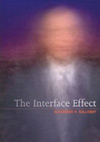 | Western thought has long construed media as a grand choice between two kinds of interfaces. Following the optimistic path, media seamlessly interface self and other in a transparent and immediate connection. But, following the pessimistic path, media are the obstacles to direct communion, disintegrating self and other into misunderstanding and contradiction. In other words, media interfaces are either clear or complicated, either beautiful or deceptive, either already known or endlessly interpretable. Recognizing the limits of either path, Galloway charts an alternative course by considering the interface as an autonomous zone of aesthetic activity, guided by its own logic and its own ends: the interface effect. Grounded in philosophy and cultural theory and driven by close readings of video games, software, television, painting, and other images, Galloway seeks to explain the logic of digital culture through an analysis of its most emblematic and ubiquitous manifestation—the interface. |
India's World: The Politics of Creativity in a Globalized Society | |
 | India in the twenty-first century is perhaps more than at any other time in its history a place of contradictions. On the one hand, it is perceived as a rising superpower, on the other, it is classified as a third-world country. Indian writing in English is flourishing, but classical languages, such as Sanskrit, seem to find no takers anymore. While every Indian citizen has the right to vote during election time, Dalits have to often struggle for their rights and dignity, more than sixty years after untouchability was abolished. These issues and counter-issues, and more, are discussed in this anthology by some of the most informed and insightful commentators on India: Ajit Balakrishnan, Sheldon Pollock, Gopal Guru, Ranjani Mazumdar, and Sabyasachi Bhattacharya, among others. Taken together, the essays in this volume illustrate why the country's achievements should be seen only in the context of its problems, in order to get a complete picture of contemporary India. |
The Right to Look: A Counterhistory of Visuality | |
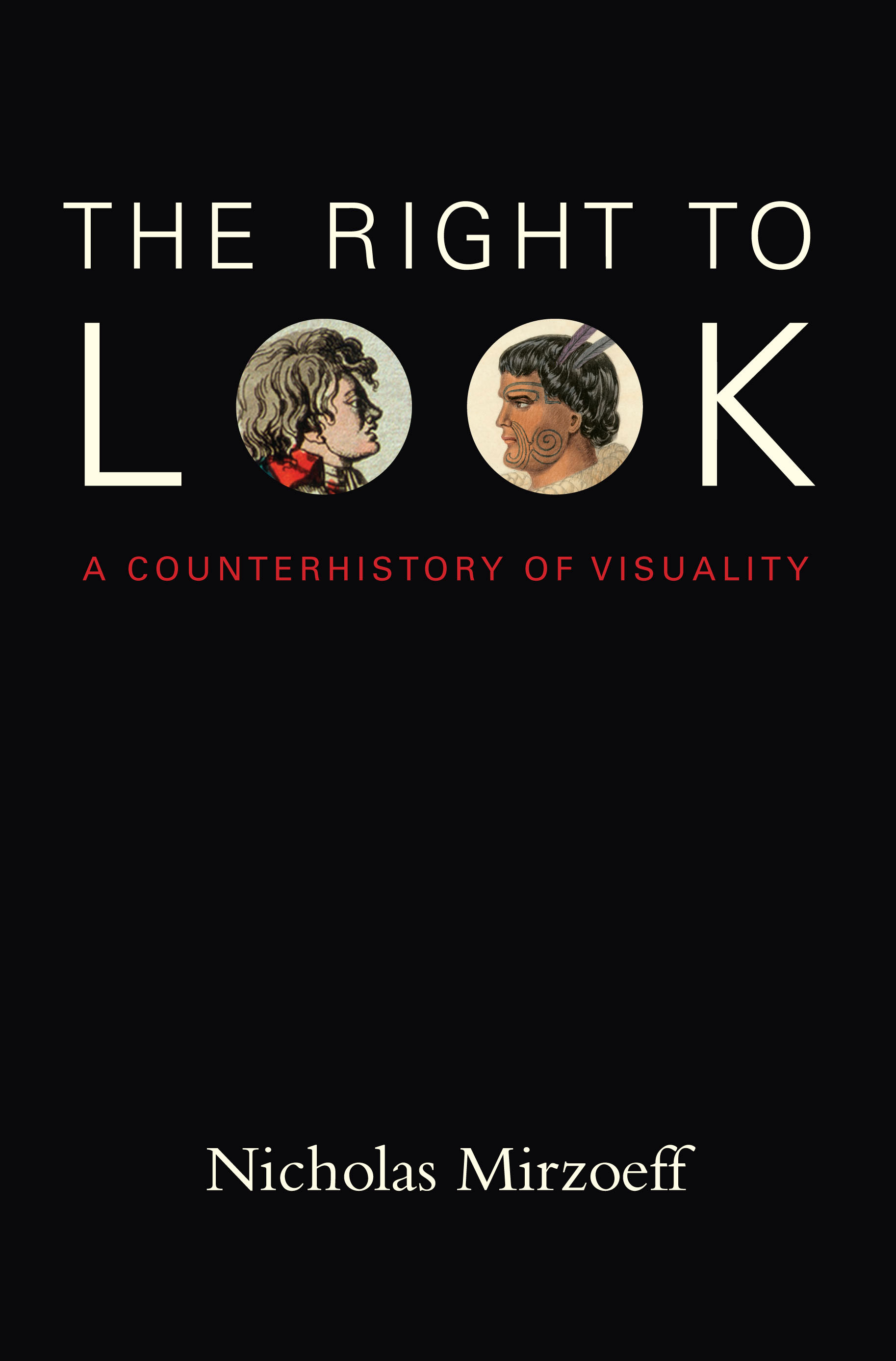 | Winner of the Anne Friedberg Innovative Scholarship Award In The Right to Look, Nicholas Mirzoeff develops a comparative decolonial framework for visual culture studies, the field that he helped to create and shape. Casting modernity as an ongoing contest between visuality and countervisuality, or “the right to look,” he explains how visuality sutures authority to power and renders the association natural. An early-nineteenth-century concept, meaning the visualization of history, visuality has been central to the legitimization of Western hegemony. Mirzoeff identifies three “complexes of visuality”—plantation slavery, imperialism, and the present-day military-industrial complex—and explains how, within each, power is made to seem self-evident through techniques of classification, separation, and aestheticization. At the same time, he shows how each complex of visuality has been countered—by the enslaved, the colonized, and opponents of war, all of whom assert autonomy from authority by claiming the right to look. |
(Open) Utopia | |
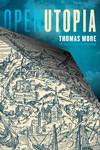 | Open Utopia is the first complete English language edition of Thomas More’s Utopia that honors the primary precept of Utopia itself: that all property is common property. Open Utopia, licensed under Creative Commons, is free to copy, to share, to use. But Utopia is more than the story of a far-off land with no private property. It is a text that instructs us how to approach texts, be they literary or political, in an open manner: open to criticism, open to participation, and open to re-creation. Utopia is no-place, and therefore it is up to all of us to imagine it. In this volume, and its accompanying website, Utopia is re-imagined and brought into the digital age as a participatory technology for undermining authority and facilitating new imagination. |
Grey Room | |
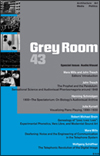 | Grey Room brings together scholarly and theoretical articles from the fields of architecture, art, media, and politics to forge a cross-disciplinary discourse uniquely relevant to contemporary concerns. Publishing some of the most interesting and original work within these disciplines, Grey Room has positioned itself at the forefront of the most current aesthetic and critical debates. Featuring articles, translations, interviews, dossiers, and academic exchanges, Grey Room's emphasis on aesthetic practice and historical and theoretical discourse appeals to a wide range of readers, including architects, artists, scholars, students, and critics. |
Race Appeal | |
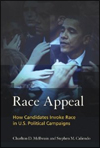 | Winner of the Ralph J. Bunche Award Combining rigorous analyses with in-depth case studies—including an examination of race-based appeals in the historic 2008 presidential election—Race Appeal is a groundbreaking work that represents the most extensive and thorough treatment of race-based appeals in American political campaigns to date. Charlton McIlwain and Stephen Caliendo use various methods of analysis for examining candidates “playing the race card” in political advertisements. They offer a compelling analysis of the construction of verbal and visual racial appeals, and how the news media covers campaigns involving candidates of color. |
White Riot: Punk Rock and the Politics of Race | |
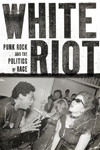 | From the Clash to Los Crudos, skinheads to afro-punks, the punk rock movement has been obsessed by race. And yet the connections have never been traced in a comprehensive way. White Riot is the definitive study of the subject, collecting first-person writing, lyrics, letters to zines, and analyses of punk history from across the globe. This book brings together writing from leading critics such as Greil Marcus and Dick Hebdige, personal reflections from punk pioneers such as Jimmy Pursey, Darryl Jenifer and Mimi Nguyen, and reports on punk scenes from Toronto to Jakarta. |
Circuits of Visibility | |
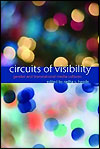 | Exploring the ways in which gendered subjects are produced and defined in globally networked, media saturated environments, Circuits of Visibility presents sixteen essays that collectively promote discussion about sexual politics, mediated environments and globalization. Covering television, the internet, newspaper studies, and movement-oriented media work, the volume explores the ways in which gender and sexuality issues are constructed and mobilized across the world. Contributors' essays cover a diverse amount of countries, from Myanmar and Morocco to the Balkans, France, U.S., and China, and feature topics ranging from violence against women and anti-violence activism to political power deriving from representations of being single or married. |
The Routledge Companion to Race and Ethnicity | |
 | The Routledge Companion to Race and Ethnicity is a comprehensive guide to the increasingly relevant, broad and ever changing terrain of studies surrounding race and ethnicity. Comprising a series of essays and a critical dictionary of key names and terms written by respected scholars from a range of academic disciplines, this book provides a thought provoking introduction to the field. Fully cross referenced throughout, with suggestions for further reading and international examples, this book is indispensible reading for all those studying issues of race and ethnicity across the humanities and social and political sciences. |
Communicating Power and Gender | |
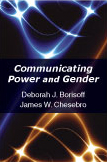 | As a perceptive and outstanding assessment, Communicating Power and Gender examines the relationships between gender and power and how they are linked to and transformed by the communication process. Within this discussion a host of correlations emerge, crossing social, cultural, historical, political, and racial spheres. The authors also consider four contexts that shape and influence gender socialization and sex-role constructions: mediated communication and gender roles in various media systems, early socialization in the home, the educational landscape, and women and men in the workplace. |
Always Already New: Media, History, and the Data of Culture | |
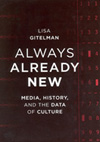 | In Always Already New, Lisa Gitelman explores the newness of new media while she asks what it means to do media history. Using the examples of early recorded sound and digital networks, Gitelman challenges readers to think about the ways that media work as the simultaneous subjects and instruments of historical inquiry. Presenting original case studies of Edison's first phonographs and the Pentagon's first distributed digital network, the ARPANET, Gitelman points suggestively toward similarities that underlie the cultural definition of records (phonographic and not) at the end of the nineteenth century and the definition of documents (digital and not) at the end of the twentieth. As a result, Always Already New speaks to present concerns about the humanities as much as to the emergent field of new media studies. |
Reality TV: Remaking Television Culture | |
 | Reality TV, now updated with eight new essays, is one of the first books to address the economic, visual, cultural, audience, and new media dimensions of reality television and has become the standard in the field. The essays provide a complex and comprehensive picture of how and why this genre emerged, what it means, how it differs from earlier television programming, and how it engages societies, industries, and individuals. Topics range from the blending of fact and fiction, to the uses of viewer labor and “interactivity,” to issues of surveillance, gender performativity, hyper-commercialism, and generic parody. By spanning reality television’s origins in the late 1940s to its current overwhelming popularity, Reality TV demonstrates both the tenacity of the format and its enduring ability to speak to our changing political and social desires and anxieties. |
Dream: Re-imagining Progressive Politics in an Age of Fantasy | |
 | What do Paris Hilton, Grand Theft Auto, Las Vegas, and a McDonald’s commercial have in common with progressive politics? Not much. And, as Stephen Duncombe brilliantly argues, this is part of what’s wrong with progressive politics. According to Duncombe, culture—and popular fantasy—can help us define and actualize a new political aesthetic: a kind of dreampolitik, created not simply to further existing progressive political agendas but help us imagine new ones. Dream makes the case for a political strategy that embraces a new set of tools. Learning from Las Vegas, however, does not mean adopting its values, as Duncombe demonstrates in outlining plans for what he calls “ethical spectacle. |
Tourists of History | |
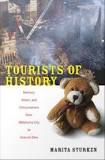 | In Tourists of History, cultural critic Marita Sturken argues that over the past two decades, Americans have responded to national trauma through consumerism, kitsch sentiment, and tourist practices in ways that reveal a tenacious investment in the idea of America’s innocence. Sturken investigates the consumerism that followed from the September 11th attacks; the contentious, ongoing debates about memorials and celebrity-architect designed buildings at Ground Zero; and two outcomes of the bombing of the Alfred P. Murrah Federal Building in Oklahoma City: the Oklahoma City National Memorial and the execution of Timothy McVeigh. |
Worship and Conflict under Colonial Rule | |
 | Although temples have been important in South Indian society and history, there have been few attempts to study them within an integrated anthropological framework. Professor Appadurai develops such a framework in this ethnohistorical case study, in which he interprets the politics of worship in the Sri Partasarati Svami Temple, a famous ancient Sri Vaisnava shrine in India. The author uses the methods and concepts of both cultural anthropology and social history to construct a model of institutional change in South Asia under colonial rule. Focusing on the problem of authority as a cultural concept and as a managerial reality, Appadurai considers some classic problems of South Asian anthropology: problems of deference, sumptuary symbolism, and religious organization. |
Selling War to America: From the Spanish American War to the Global War on Terror | |
 | Selling War to America begins its examination with the U.S. Government's campaign to instigate a war with Spain and ends with a review of the methods the government used to encourage support for the War Against Terror. From these historical analyses, noting both the blunders and the triumphs of the past century, Selling War to America pinpoints the pitfalls and offers the keys to successfully persuading the American public to support wars that must be fought. |
Fooled Again | |
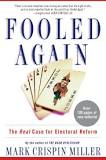 | For Republicans, the 2004 presidential election was little short of miraculous: Behind in the Electoral College tally in the days leading up to the election, behind even on the very afternoon of the vote, the Bush ticket staged a stunning comeback. The exit polls, usually so reliable, turned out to be wrong by an unprecedented 5 percent in the swing states. Conservatives argued-and the media agreed-that "moral values" had made the difference. In his new book Mark Crispin Miller argues that it wasn't moral values that swung the election—it was theft. |
Practices of Looking: An Introduction to Visual Culture, Second Edition | |
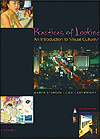 | Our lives are dominated by images and by visual technologies that allow for the local and global circulation of ideas, information, and politics. Now in a new edition, Practices of Looking: An Introduction to Visual Culture provides a comprehensive and engaging overview of how we understand a wide array of visual media and how we use images to express ourselves, to communicate, to play, and to learn. Marita Sturken and Lisa Cartwright—two leading scholars in the emergent and dynamic field of visual culture and communication—examine the diverse range of approaches to visual analysis and lead students through key theories and concepts. |
Fear of Small Numbers | |
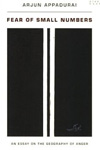 | The period since 1989 has been marked by the global endorsement of open markets, the free flow of finance capital and liberal ideas of constitutional rule, and the active expansion of human rights. Why, then, in this era of intense globalization, has there been a proliferation of violence, of ethnic cleansing on the one hand and extreme forms of political violence against civilian populations on the other? Fear of Small Numbers is Arjun Appadurai’s answer to that question. A leading theorist of globalization, Appadurai turns his attention to the complex dynamics fueling large-scale, culturally motivated violence, from the genocides that racked Eastern Europe, Rwanda, and India in the early 1990s to the contemporary “war on terror.” Providing a conceptually innovative framework for understanding sources of global violence, he describes how the nation-state has grown ambivalent about minorities at the same time that minorities, because of global communication technologies and migration flows, increasingly see themselves as parts of powerful global majorities. |
Hitch Your Antenna to the Stars: Early Television and Broadcast Stardom | |
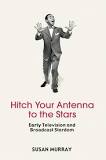 | Hitch Your Antenna to the Stars! is the first cultural and industrial history of early television stardom. Susan Murray argues that television stars were central to the growth and development of American broadcasting. They were used not only to promote programs and the sale of television sets and advertised consumer goods, but also to established network identities. Through profiles of well-known performers including Milton Berle, Sid Caesar, Jackie Gleason, and Lucille Ball, she shows how the television industry gave birth to the idea of TV stars and established a system of star production and management notably different from the Hollywood star system of the studio era. |
Newspapers and the Making of Modern America | |
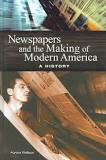 | By investigating specific cases of newspapers in their communities, Newspapers and the Making of Modern America shows the newspaper as an agent of change in the construction and maintenance of community. It develops the theme of a newspaper as a prime mover in enacting policy, supporting development, building neighborhoods, and generally modifying the physical and built environment. |
Bourdieu and the Journalistic Field | |
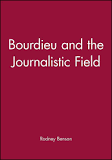 | Bourdieu and the Journalistic Field is an exciting new text which builds on and extends Pierre Bourdieu's impassioned critique of our media-saturated culture. Presenting for the first time in English the work of influential scholars who worked with or were influenced by Bourdieu, this volume is the one and only book for Anglophone scholars seeking a more detailed elaboration of field theory in relation to the mass media. |
When Death Goes Pop: Death, Media and the Remaking of Community | |
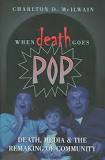 | Scholars, educators, health professionals, and activists from a variety of fields have struggled with one of the most significant questions of contemporary life: How do we rescue the experience of death and dying from the mire of fear, denial, and secrecy that it has been associated with for the better part of a century? In When Death Goes Pop, Charlton McIlwain describes a striking emerging shift in the way that death is represented in such omnipresent forms of media as television—a shift that seems to be moving the American discourse on death and dying from the private sphere to the public. |
Cultural Resistance: A Reader | |
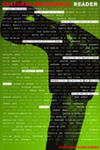 | From the Diggers seizing St. George Hill in 1649 to Hacktivists staging virtual sit-ins in the 21st century, from the retributive fantasies of Robin Hoods to those of gangsta rappers, culture has long been used as a political weapon. This expansive and carefully crafted reader brings together many of the classic texts that help to define culture as a tool of resistance. With concise, illuminating introductions throughout, it presents a range of theoretical and historical writings that have influenced contemporary debate, and includes a number of new activist authors published here for the first time. |
Globalization | |
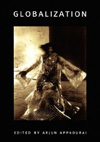 | Edited by one of the most prominent scholars in the field and including a distinguished group of contributors, this collection of essays makes a striking intervention in the increasingly heated debates surrounding the cultural dimensions of globalization. While including discussions about what globalization is and whether it is a meaningful term, the volume focuses in particular on the way that changing sites—local, regional, diasporic—are the scenes of emergent forms of sovereignty in which matters of style, sensibility, and ethos articulate new legalities and new kinds of violence. |
Politics after Television | |
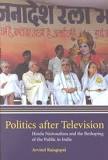 | In January 1987, the Indian state-run television began broadcasting a Hindu epic in serial form, The Ramayana, to nationwide audiences, violating a decades-old taboo on religious partisanship. What resulted was the largest political campaign in post-independence times, around the symbol of Lord Ram, led by Hindu nationalists. The complexion of Indian politics was irrevocably changed thereafter. In this book, Arvind Rajagopal analyses this extraordinary series of events. While audiences may have thought they were harking back to an epic golden age, Hindu nationalist leaders were embracing the prospects of neoliberalism and globalisation. Television was the device that hinged these movements together, symbolising the new possibilities of politics, at once more inclusive and authoritarian. Simultaneously, this study examines how the larger historical context was woven into and changed the character of Hindu nationalism. |
Women and Men Communicating: Challenges and Changes | |
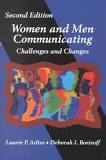 | Understanding and effectively addressing the impact that differences have on our lives is important in promoting fairness and equitability. Arliss and Borisoff have enlisted the expertise of the best scholars to explore the effects of gender differences with regard to individuals, interpersonal relationships, and professional environments. Contributors have updated their original chapters and added questions for further discussion for this new edition. New chapters on gay men, race and gender, and employment interviewing have been added to strengthen an already highly regarded study of gender communication. The broad scope of topics covered in this volume reflects the challenges faced by both men and women communicating on a variety of fronts. While some readers may discover new perspectives, all readers will relate to and learn from the experts exploration of gender and communication, gaining insights that are most important in the twenty-first century. |
The Nervous Liberals: Propaganda Anxieties from World War I to the Cold War | |
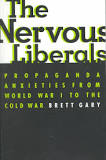 | The Nervous Liberals explores how free speech liberalism was further challenged by the national security culture, whose mobilization before World War II to fight the propaganda threat lead to much of the Cold War anxiety about propaganda. Gary's account sheds considerable light not only on the history of propaganda, but also on the central dilemmas of liberalism in the first half of the twentieth century: the delicate balance between protecting national security and protecting civil liberties, including freedom of speech; the tension between public centered versus expert centered theories of democracy; and the conflict between social reform and public opinion control as the legitimate aim of social knowledge. |
Tangled Memories: The Vietnam War, the AIDS Epidemic, and the Politics of Remembering | |
 | Analyzing the ways U.S. culture has been formed and transformed in the 80s and 90s by its response to the Vietnam War and the AIDS epidemic, Marita Sturken argues that each has disrupted our conventional notions of community, nation, consensus, and "American culture." She examines the relationship of camera images to the production of cultural memory, the mixing of fantasy and reenactment in memory, the role of trauma and survivors in creating cultural comfort, and how discourses of healing can smooth over the tensions of political events. |
Notes from Underground | |
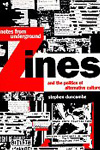 | In this, the first comprehensive study of zine publishing, Stephen Duncombe describes their origins in early-twentieth-century science fiction cults, their more proximate roots in 60s counter-culture and their rapid proliferation in the wake of punk rock. While Notes from Underground pays full due to the political importance of zines as a vital web of popular culture, it also notes the shortcomings of their utopian and escapist outlook in achieving fundamental social change. Duncombe’s book raises the larger question of whether it is possible to rebel culturally within a consumer society that eats up cultural rebellion. |
Modernity at Large: Cultural Dimensions of Globalization | |
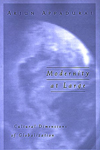 | Offering a new framework for the cultural study of globalization, Modernity at Large shows how the imagination works as a social force in today's world, providing new resources for identity and energies for creating alternatives to the nation-state, whose era some see as coming to an end. Appadurai examines the current epoch of globalization, which is characterized by the twin forces of mass migration and electronic mediation, and provides fresh ways of looking at popular consumption patterns, debates about multiculturalism, and ethnic violence. He considers the way images-of lifestyles, popular culture, and self-representation-circulate internationally through the media and are often borrowed in surprising (to their originators) and inventive fashions. |
Canada's Hollywood: The Canadian State and Feature Films | |
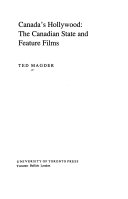 | The development of the feature film industry in Canada has been uncertain and difficult, with problems usually attributed to the country's small population and US domination of the movie industry. Ted Magder goes beyond these obvious influences in his examination of Canada's state policies as they affected the production of Canadian feature films from the First World War to the present. He presents a study focusing on the interplay between government policy and the dynamics of the industry, and undertakes an examination of cultural dependency in Canada. State policies, Magder points out, are related to domestic forces that impinge upon and set limits to policy decisions and their implementation. |
Formations of Violence: The Narrative of the Body and Political Terror in Northern Ireland | |
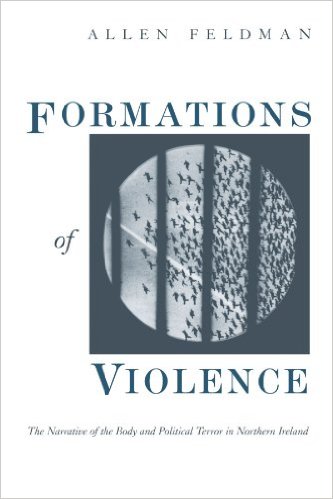 | "A sophisticated and persuasive late-modernist political analysis that consistently draws the reader into the narratives of the author and those of the people of violence in Northern Ireland to whom he talked. . . . Simply put, this book is a feast for the intellect"—Thomas M. Wilson, American Anthropologist |
The Social Life of Things | |
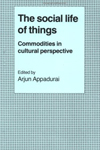 | The meaning that people attribute to things necessarily derives from human transactions and motivations, particularly from how those things are used and circulated. The contributors to this volume examine how things are sold and traded in a variety of social and cultural settings, both present and past. Focusing on culturally defined aspects of exchange and socially regulated processes of circulation, the essays illuminate the ways in which people find value in things and things give value to social relations. By looking at things as if they lead social lives, the authors provide a new way to understand how value is externalized and sought after. Containing contributions from American and British social anthropologists and historians, the volume bridges the disciplines of social history, cultural anthropology, and economics, and marks a major step in our understanding of the cultural basis of economic life and the sociology of culture. |
